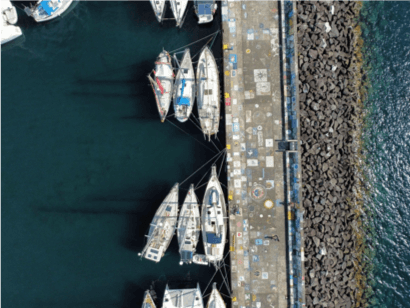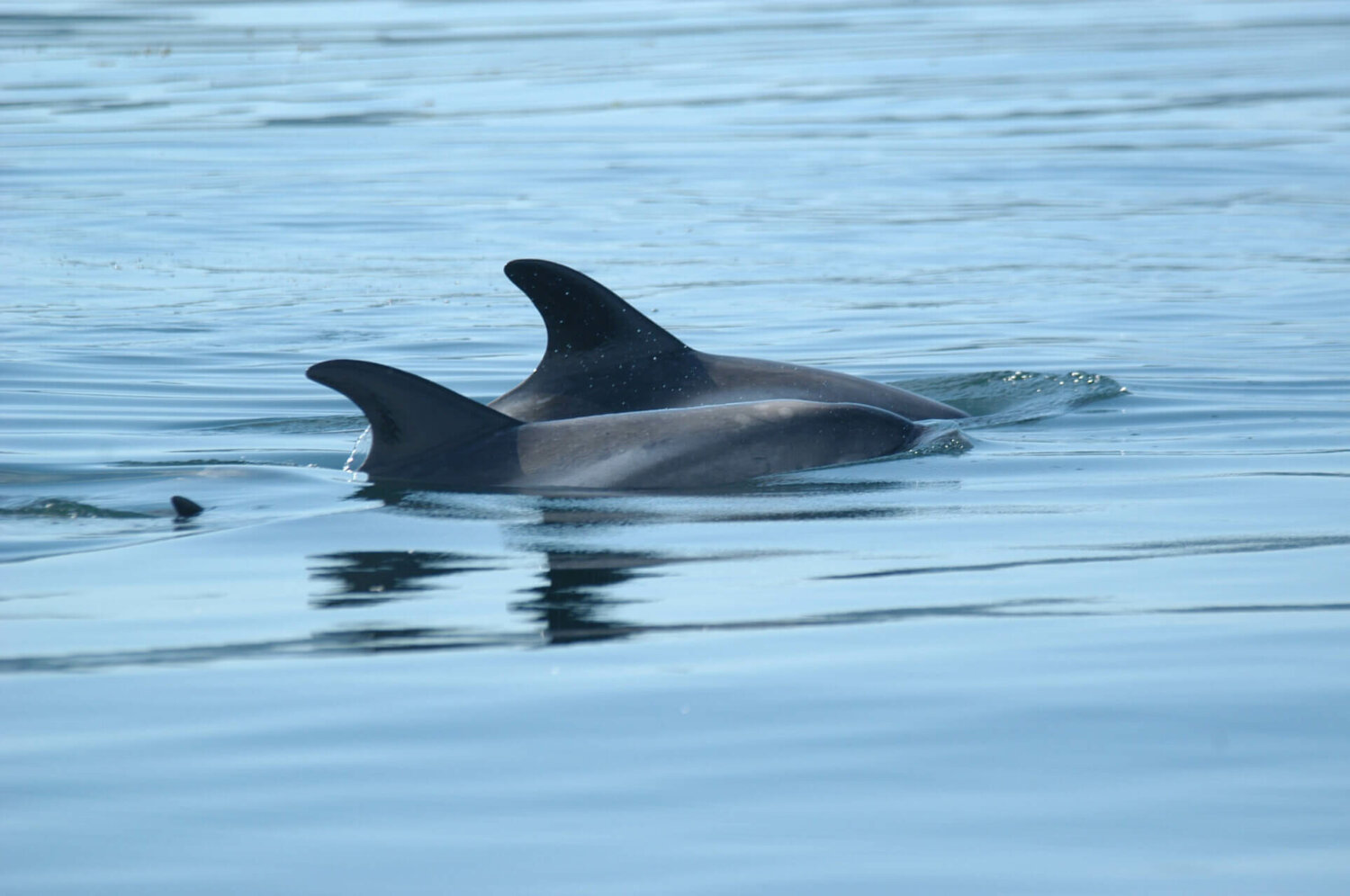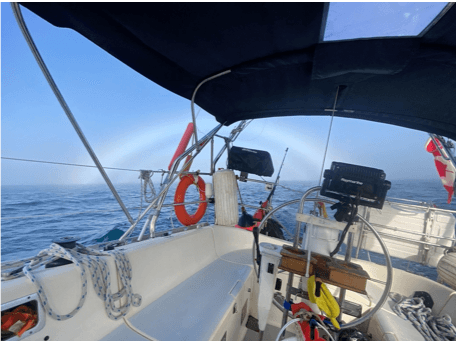By Estelle Pagé
The winds are rather favourable today, with a decent consistency that allows us to maintain a speed of about 5 knots. Having departed from Québec City, we plan another week of sailing before arriving in the Azorean town of Horta , our stopover before heading to the Portuguese mainland.
I take a first sip of my coffee, still trying to wake up completely, as I’m not a morning person by nature. As I gaze out at the horizon, still half-asleep, something catches my eye. To my surprise, a group of Atlantic white-sided dolphins is approaching our boat.
I spot three individuals emerge on the port side, followed by several others that seem to be coming toward us. All of them are heading straight for the bow of our sailboat. My heart races with excitement – each encounter with these animals is an experience that makes me feel like a child seeing them for the very first time. It is so fascinating to know that there is so much life below us and that we still know so little about it.
I put on my harness and quickly head to the bow of the boat, going around the genoa sail to get to the pulpit. There, I sit down to observe them more closely. There are about fifteen of them, all lined up side by side to surf the wave generated by our sailboat. It is incredible to see them slice through the water with such ease and interchange their positions in perfect synchronization.
Although sailboats are not particularly noisy on the water, I find it important to remember that they are not without impact on marine mammals. Even in the absence of an engine, our presence can disturb these sensitive individuals. Speed, equipment noise, and even just the fact that we are there can have effects on their behaviour and well-being. Like many other marine mammals, dolphins are vulnerable to disturbance, and it is our responsibility to keep our impact to a minimum. As boaters, we must respect the recommended minimum distances to avoid disturbing them.
The ocean is quite calm today, which means I can hear the sounds being made by the dolphins. Their whistles sound like little squeaks. In just five minutes, they leave as quickly as they arrived, disappearing into the horizon with graceful ease. I stand there, grateful to have witnessed such beauty.
Our encounter with the dolphins today is a beautiful reminder of the importance of preserving these precious interactions while minimizing our impact.










